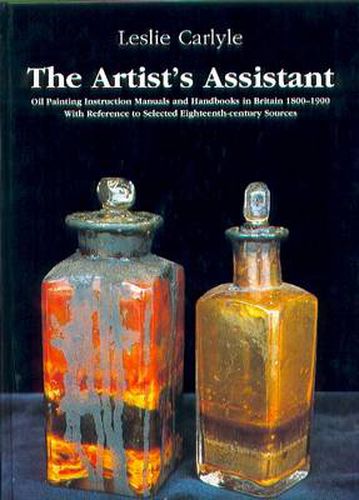Readings Newsletter
Become a Readings Member to make your shopping experience even easier.
Sign in or sign up for free!
You’re not far away from qualifying for FREE standard shipping within Australia
You’ve qualified for FREE standard shipping within Australia
The cart is loading…






At the beginning of the nineteenth century, although colourmen sold oil paint ready-prepared in bladders, artists were still accustomed to purchasing pigments, oils and other components for their paint separately, combining them according to published information, experiment, personal preference and hearsay. By the close of the century, however, artists’ colourmen were providing tube paints for export worldwide. The science of artists’ paint production had undergone a transformation. In her meticulously researched study Dr. Carlyle has examined artists’ manuals, catalogues and trade journals produced in Britain, and later in the United States, during this period of transition in the artists’ materials and techniques. She has compared all the extant editions of widely reprinted books and sought out publications which, although obscure now, were highly influential in their time. Recipes for varnishes, vehicles, paint mediums and grounds have been compared and tabulated. Methods of painting have been described, and the ‘artistical’ properties of pigments, their working qualities, drying times and cautionary notes on their use, have all been compiled in an extensive appendix. Fascinating, accessible and carefully structured, ‘The Artist’s Assistant’ is the first comprehensive and critical analysis of information on nineteenth-century artist’s materials. It is an invaluable resource, not only for conservators and historians of art technology but also for artists, researchers and teachers who wish to work with authentic materials.
$9.00 standard shipping within Australia
FREE standard shipping within Australia for orders over $100.00
Express & International shipping calculated at checkout
At the beginning of the nineteenth century, although colourmen sold oil paint ready-prepared in bladders, artists were still accustomed to purchasing pigments, oils and other components for their paint separately, combining them according to published information, experiment, personal preference and hearsay. By the close of the century, however, artists’ colourmen were providing tube paints for export worldwide. The science of artists’ paint production had undergone a transformation. In her meticulously researched study Dr. Carlyle has examined artists’ manuals, catalogues and trade journals produced in Britain, and later in the United States, during this period of transition in the artists’ materials and techniques. She has compared all the extant editions of widely reprinted books and sought out publications which, although obscure now, were highly influential in their time. Recipes for varnishes, vehicles, paint mediums and grounds have been compared and tabulated. Methods of painting have been described, and the ‘artistical’ properties of pigments, their working qualities, drying times and cautionary notes on their use, have all been compiled in an extensive appendix. Fascinating, accessible and carefully structured, ‘The Artist’s Assistant’ is the first comprehensive and critical analysis of information on nineteenth-century artist’s materials. It is an invaluable resource, not only for conservators and historians of art technology but also for artists, researchers and teachers who wish to work with authentic materials.